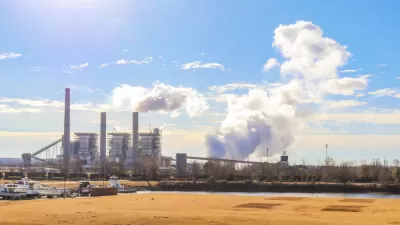Appalachia, long known as one of the poorest parts of the U.S. with chronically high unemployment, finds itself in the enviable position of enjoying remarkably low unemployment due to unwavering demand for its main natural resource – coal.
"Mining is one of only two areas of the private sector that added jobs in October -- the other was health care. While 7,000 new mining jobs are hardly enough to register in a national economy that shed 240,000 jobs last month, they make a difference in parts of the country like Appalachia that have historically felt the deepest pain during recessions.
Unemployment in West Virginia, the second-biggest coal-producing state behind Wyoming, was 4.7% in October, compared with 6.5% nationally.
The use of coal, which generates more than half the nation's electricity, tends to remain fairly constant even when economic activity slows."
"Electricity demand never really changes," said Paul Forward, an analyst with Stifel, Nicolaus. He expects utilities' demand for coal to be down 1% this year and up 0.7% next year."
"I don't think West Virginia is going to avoid the national downturn altogether, but we're in better shape" than many other states, said George Hammond, an economist at West Virginia University."
From "Surprise Drop in Power Use Delivers Jolt to Utilities":
While coal will undoubtedly remain in strong demand, "an unexpected drop in U.S. electricity consumption has utility companies worried that the trend isn't a byproduct of the economic downturn. Utilities have long counted on sales growth of 1% to 2% annually in the U.S." but they may need to rethink their expansion plans.
FULL STORY: Appalachia Is a Bright Spot as Coal Country Seeks Workers

Planetizen Federal Action Tracker
A weekly monitor of how Trump’s orders and actions are impacting planners and planning in America.

Maui's Vacation Rental Debate Turns Ugly
Verbal attacks, misinformation campaigns and fistfights plague a high-stakes debate to convert thousands of vacation rentals into long-term housing.

Restaurant Patios Were a Pandemic Win — Why Were They so Hard to Keep?
Social distancing requirements and changes in travel patterns prompted cities to pilot new uses for street and sidewalk space. Then it got complicated.

In California Battle of Housing vs. Environment, Housing Just Won
A new state law significantly limits the power of CEQA, an environmental review law that served as a powerful tool for blocking new development.

Boulder Eliminates Parking Minimums Citywide
Officials estimate the cost of building a single underground parking space at up to $100,000.

Orange County, Florida Adopts Largest US “Sprawl Repair” Code
The ‘Orange Code’ seeks to rectify decades of sprawl-inducing, car-oriented development.
Urban Design for Planners 1: Software Tools
This six-course series explores essential urban design concepts using open source software and equips planners with the tools they need to participate fully in the urban design process.
Planning for Universal Design
Learn the tools for implementing Universal Design in planning regulations.
Heyer Gruel & Associates PA
JM Goldson LLC
Custer County Colorado
City of Camden Redevelopment Agency
City of Astoria
Transportation Research & Education Center (TREC) at Portland State University
Jefferson Parish Government
Camden Redevelopment Agency
City of Claremont





























